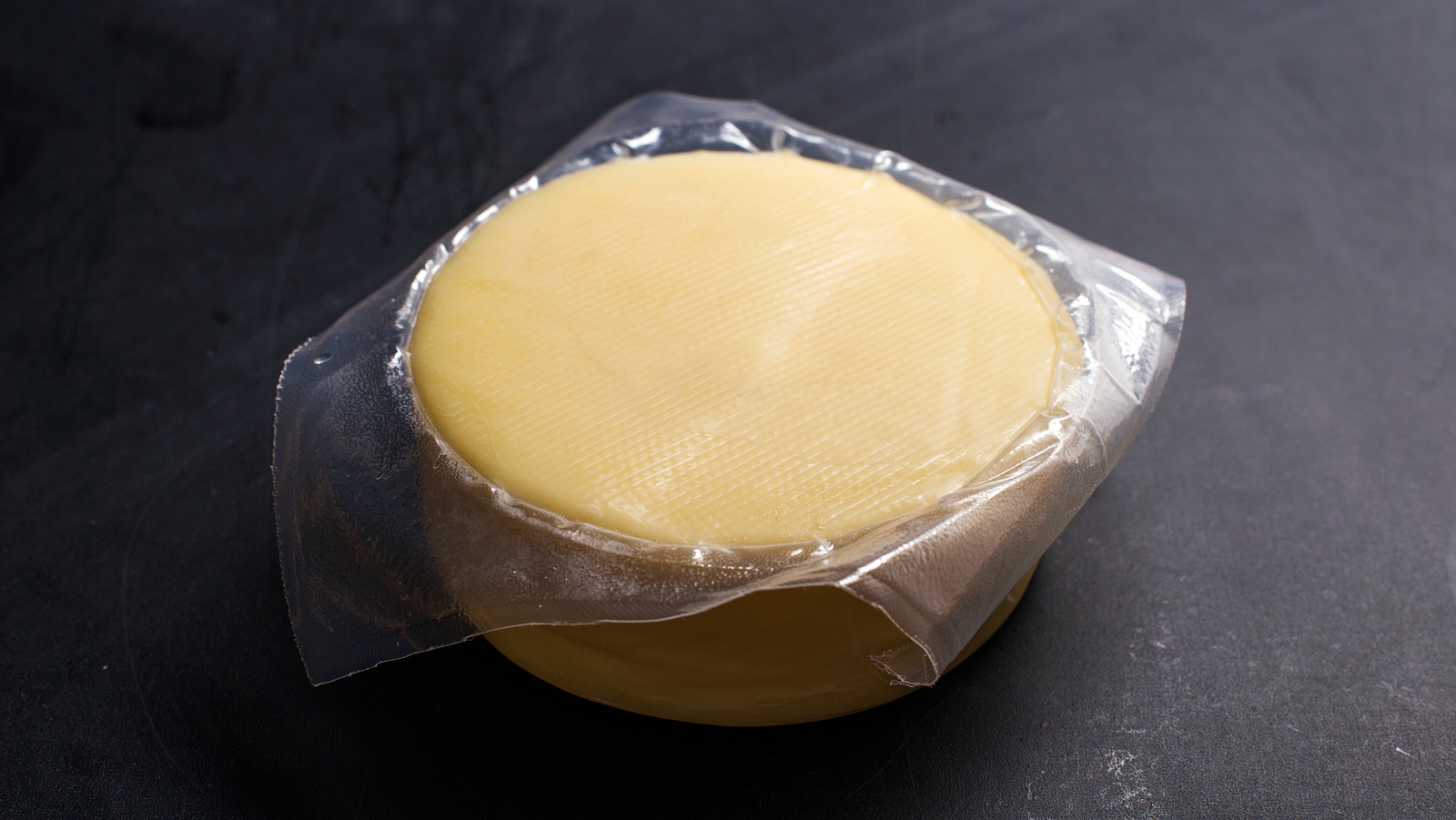Picture this: You've just grabbed a brand-new package of shrink-wrapped cheese out of the refrigerator, excited to get to snacking. But when you tear into it, you discover that the cheese has been sitting in a slick layer of what appears to be water. It passes the sniff test, the plastic hasn't been punctured, and there are no unusual mold spots on it.
So why was your block of cheese soggy even before it was opened? It turns out that prepackaged cheese can develop moisture due to its natural production process, and to address the elephant in the room, yes, it's perfectly safe to eat. The clear liquid you're seeing isn't water but rather whey, which can sometimes seep out after the cheese has been packaged. And not every shrink-wrapped cheese you purchase will have whey in the packaging, either.

Whey naturally seeps out in aged cheeses, such as mature cheddars, as part of the aging process. Yours is still doing a residual bit of aging after it's been packaged. There's no special method you need to use to address the whey, aside from simply blotting it up with a paper towel or a napkin.
After that, you can get to eating your cheese immediately. Don't worry about white crystals in your cheese, either In aged cheeses, you might also see little white spots that look suspiciously like mold, but if you inspect them more closely, they should have an appearance that's crystalline in nature. Don't worry about these, either — they're either calcium lactate or tyrosine, which occur nat.























